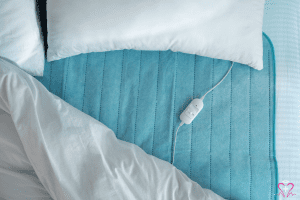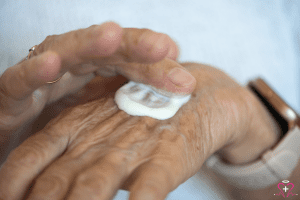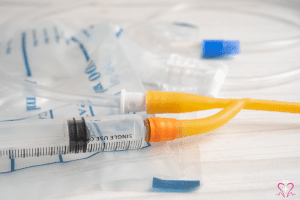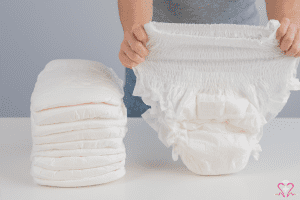The Benefits of Absorbent Pads for Managing Incontinence
Incontinence is a common issue that affects millions of adults worldwide. It can significantly impact an individual’s quality of life, causing discomfort, embarrassment, and even social isolation.
Absorbent pads for incontinence are not just a solution; they are practical solutions. They offer protection, comfort, and the freedom to lead an active life, making them an essential tool in managing this condition effectively.
This article is a comprehensive resource on the benefits and uses of absorbent pads for incontinence. It will help you select the right pad for your needs and educate you on the various types available in the market.
This guide is tailored to your needs, whether you are personally dealing with incontinence, a caregiver, a healthcare professional, or someone seeking solutions for a loved one.
We will delve into the different types of incontinence, the anatomy of an absorbent pad, and how they differ from other incontinence products. We will also discuss the technology behind their absorbency, the importance of skin health, and the environmental impact of disposable pads.
By the end of this article, you will have gained a sense of empowerment and control over incontinence management. You will understand how absorbent pads can significantly improve the quality of life for incontinence patients. Let’s embark on this journey towards better incontinence management together.
Understanding Incontinence and Its Impact
Incontinence is a medical condition characterized by the involuntary loss of urine or feces. It is a symptom, not a disease, and can be caused by everyday habits, underlying medical conditions, or physical problems.
The impact of incontinence on an individual’s life can be profound. Not managed properly can lead to physical discomfort, skin irritation, and infections.
Moreover, the fear of leakage can cause anxiety and stress, leading to social withdrawal and isolation. It can also disrupt sleep, leading to fatigue and decreased productivity.
Incontinence can affect anyone, regardless of age or gender. However, certain factors increase the risk, including being female, getting older, being overweight, and having a family history of incontinence.
Here are some critical facts about incontinence:
- It affects both men and women, but women are more likely to have stress incontinence due to pregnancy, childbirth, and menopause.
- It is not a normal part of aging, but it is more common in older people.
- It is often treatable and manageable with the proper care and products.
Types of Incontinence and Who Is Affected
There are several types of incontinence, each with its causes and symptoms. Stress incontinence, the most common type, is caused by physical pressure on the bladder. This pressure can come from coughing, sneezing, laughing, or exercise.
Urge incontinence, also known as overactive bladder, is characterized by a sudden, intense urge to urinate followed by an involuntary loss of urine. This type is often associated with conditions that affect the nervous system, such as Parkinson’s disease or multiple sclerosis.
Other types include:
- Overflow incontinence, where the bladder doesn’t empty properly.
- Functional incontinence, where physical or mental impairments prevent timely bathroom use.
- Mixed incontinence is a combination of two or more types.
The Psychological and Social Effects of Incontinence
Incontinence can have significant psychological and social effects. The fear of an accident can lead to anxiety and embarrassment, causing individuals to avoid social activities and even work.
This social isolation can lead to feelings of loneliness and depression. It can also strain relationships with partners and family members, further increasing emotional distress.
However, with the right management strategies and products, such as absorbent pads, individuals with incontinence can lead active, fulfilling lives. The key is understanding the condition, seeking professional help, and finding the right products to manage it effectively.
The Role of Absorbent Pads in Incontinence Care
Absorbent pads are crucial in managing incontinence. They provide a practical, discreet, and comfortable solution for individuals experiencing urinary or fecal incontinence.
These pads are designed to absorb and lock away fluid, keeping the skin dry and preventing leakage. They come in various sizes, shapes, and absorbency levels, catering to different needs and preferences.
Absorbent pads are not just for incontinence. They are also used in medical settings, for post-operative care, and even for managing menstruation.
Here are some key benefits of using absorbent pads for incontinence:
- They provide reliable protection against leaks.
- They help maintain skin health by keeping it dry.
- They offer comfort and discretion, allowing users to lead active lives.
- They are easy to use and dispose of, making them a convenient choice.
How Absorbent Pads Provide Protection and Comfort
Absorbent pads work by quickly drawing in and locking away fluid. This rapid absorption helps protect the skin from moisture, reducing the risk of irritation and infection.
The pads are typically made of soft, breathable materials that feel comfortable against the skin. They are also designed to be thin and discreet, allowing users to wear them confidently.
Many pads feature an adhesive backing to secure them, preventing movement and bunching. This ensures reliable protection and enhances comfort during physical activities.
Moreover, some pads come with odor control technology, giving users more confidence. This feature can significantly improve the quality of life for individuals managing incontinence.
The Technology Behind Absorbency: Materials and Design
The effectiveness of an absorbent pad largely depends on its materials and design. Most pads use a core material made of superabsorbent polymers, which can absorb and retain large amounts of fluid relative to their mass.
The core is usually sandwiched between a permeable top sheet and an impermeable back sheet. The top sheet allows fluid to pass through into the core, while the back sheet prevents it from leaking.
Many pads also feature a distribution layer that spreads the fluid across the pad. This ensures even absorption and prevents the pad from becoming too wet in one area.
Finally, the shape and contour of the pad also play a role in its effectiveness. Pads are designed to fit the body closely, providing a barrier against leaks. This design consideration is significant for pads used during physical activity or overnight.
Choosing the Right Absorbent Pad
Selecting the right absorbent pad is crucial for effective incontinence management. The right pad can provide comfort, confidence, and freedom to lead an active life.
However, with the wide variety of pads available in the market, making a choice can take time and effort. It’s essential to consider several factors to find the pad that best suits your needs.
These factors include the type and severity of incontinence, lifestyle, comfort, and personal preferences. The pad’s absorbency level, size, and design must also be considered.
Remember, what works for one person may not work for another. It may take some trial and error to find the perfect fit.
Here are some key factors to consider when choosing an absorbent pad:
- Absorbency level: This should match the severity of your incontinence.
- Size: The pad should fit comfortably and provide adequate coverage.
- Design: Consider features like adhesive backing, odor control, and breathability.
- Material: Choose a pad made of soft, skin-friendly materials.
- Disposability: Decide between reusable and disposable pads based on your lifestyle and preferences.
Factors to Consider: Absorbency Levels, Size, and Gender-Specific Designs
The absorbency level of a pad is one of the most important factors to consider. Pads come in various absorbency levels, from light to heavy. Your choice should depend on the severity of your incontinence.
Another crucial factor is the size of the pad. It should fit comfortably and provide adequate coverage to prevent leaks. Most brands offer pads in different sizes to accommodate various body types.
Some pads are designed specifically for men or women, considering the differences in anatomy. These gender-specific designs can provide better fit and protection.
Finally, consider the design features of the pad. Features like adhesive backing, odor control, and breathability can enhance comfort and confidence.
Reusable vs. Disposable Pads: Making an Informed Decision
When choosing an absorbent pad, you must decide between reusable and disposable options. Both have their pros and cons.
Disposable pads are convenient and easy to use. They are ideal for people who are always on the go or prefer to avoid washing reusable pads. However, they can be more expensive and have a higher environmental impact in the long run.
On the other hand, reusable pads are more cost-effective and eco-friendly. They are usually made of durable materials that can withstand multiple washes. However, they require regular washing and drying, which may only be convenient for some.
Choosing reusable and disposable pads ultimately depends on your lifestyle, budget, and personal preferences.
Health and Environmental Considerations
When choosing an absorbent pad, it’s essential to consider health and environmental factors. The right pad should manage incontinence effectively, promote skin health, and minimize environmental impact.
Skin health is a crucial consideration. Prolonged exposure to moisture can lead to skin irritation and infections. Therefore, the pad should be made of breathable materials that allow air circulation and keep the skin dry.
The choice between reusable and disposable pads plays a significant role on the environmental front. While disposable pads offer convenience, they contribute to landfill waste. On the other hand, reusable pads are more eco-friendly but require regular washing.
Explore Senior Care ServicesHere are some essential health and environmental considerations when choosing an absorbent pad:
- Skin health: Choose a pad made of breathable, skin-friendly materials.
- Ecological impact: Consider the environmental footprint of disposable pads versus reusable ones.
- Disposal: Learn how to dispose of used pads to minimize environmental impact properly.

Skin Health and Breathability in Absorbent Pads
The health of your skin is a crucial factor to consider when choosing an absorbent pad. Prolonged exposure to moisture can lead to skin irritation, rashes, and infections. Therefore, selecting a pad that keeps the skin dry and comfortable is essential.
Breathability is a crucial feature to look for in an absorbent pad. A breathable pad allows air to circulate, reducing the risk of skin problems. Some pads also have a top layer that wicks moisture away from the skin, enhancing comfort.
Remember, maintaining skin health is not just about choosing the correct pad. Changing the pad regularly and maintaining good personal hygiene are also essential.
Eco-Friendly Options and the Environmental Impact of Disposable Pads
Another important consideration is the environmental impact of absorbent pads. While convenient, disposable pads contribute to landfill waste. Each year, millions of disposable incontinence products end up in landfills, posing a significant environmental challenge.
On the other hand, reusable pads are more eco-friendly. They are made of durable materials that can withstand multiple washes, reducing their environmental footprint. However, they do require water and energy for washing and drying.
When choosing a pad, consider its environmental impact. If you opt for disposable pads, look for brands that use sustainable materials or offer biodegradable options. If you choose reusable pads, wash them in full loads and air-dry them when possible to minimize energy use.
Practical Tips for Managing Incontinence with Absorbent Pads
Managing incontinence effectively requires more than just choosing the right absorbent pad. It involves understanding how to use and dispose of the pads properly, maintaining a regularly changing schedule, and supporting loved ones dealing with incontinence.
Using absorbent pads is crucial for maintaining hygiene and preventing skin problems. This includes changing the pad regularly, even if it’s partially soaked. Leaving a wet pad on for too long can lead to skin irritation and infections.
Another important aspect is the disposal of used pads. Used pads should be disposed of in a sanitary manner to prevent the spread of bacteria. Some pads come with disposal bags for added convenience.
Here are some practical tips for managing incontinence with absorbent pads:
- Change the pad regularly, even if it’s partially soaked.
- Dispose of used pads in a sanitary manner.
- Consider using disposal bags for added convenience.
Usage and Disposal: Best Practices for Hygiene and Convenience
Properly using and disposing of absorbent pads is crucial for maintaining hygiene and convenience. When changing the pad, the skin must be cleaned with mild soap and water or a specialized cleansing wipe. This helps prevent skin irritation and infections.
It is equally important to dispose of used pads properly. Used pads should be wrapped in a disposal or plastic bag before being thrown in the trash. Flushing them down the toilet can cause plumbing issues.
Remember, maintaining hygiene is not just about correctly using and disposing of the pad. It’s also about maintaining good personal hygiene and cleaning the skin regularly.
Caregiver Guidance: Supporting Loved Ones with Incontinence
Supporting a loved one with incontinence can be challenging. However, with the proper knowledge and resources, caregivers can provide adequate care and support.
Understanding the different types of incontinence and the various absorbent pad options is a good starting point. This knowledge can help caregivers choose the right products for their loved ones’ needs.
Caregivers should also learn how to use and dispose of absorbent pads properly. This includes changing the pad regularly and maintaining good personal hygiene. Providing emotional support and reassurance can also go a long way in helping loved ones cope with incontinence.
Remember, caregiving is a demanding role. Caregivers need to take care of their health and well-being, too. This includes taking breaks, seeking support from others, and practicing self-care.
Conclusion: Embracing Life with Confidence
Incontinence can be challenging to manage. However, individuals can lead a confident and active life with suitable absorbent pads and proper care. The key is understanding the condition, choosing the right products, and following best hygiene and comfort practices.
Absorbent pads play a crucial role in managing incontinence effectively. They provide protection, comfort, and confidence, allowing individuals to continue their daily activities without worry. With the correct pad, individuals can embrace life with confidence despite incontinence.
The Future of Incontinence Care and Absorbent Pad Innovation
The field of incontinence care is constantly evolving, with new technologies and materials being developed to improve absorbent pads. These advancements aim to increase absorbency, enhance comfort, and reduce environmental impact.
In the future, we can expect to see even more innovative solutions. These may include smarter absorbent pads with sensors to alert users when it’s time to change or biodegradable pads that are more eco-friendly. The goal is to improve the quality of life for incontinent individuals while also considering the environmental impact.
Encouraging a Supportive Community and Reducing Stigma
Incontinence is a common condition, yet it’s often stigmatized and misunderstood. It’s essential to foster a supportive community where individuals can share their experiences and learn from each other.
Reducing stigma starts with education. By understanding incontinence and the role of absorbent pads, we can begin to break down the barriers and misconceptions. It’s also important to share success stories and positive experiences to show that incontinence can be managed effectively and individuals can lead a confident and active life.
Remember, incontinence is nothing to be ashamed of. With the proper support and resources, individuals can manage their condition effectively and confidently embrace life.















